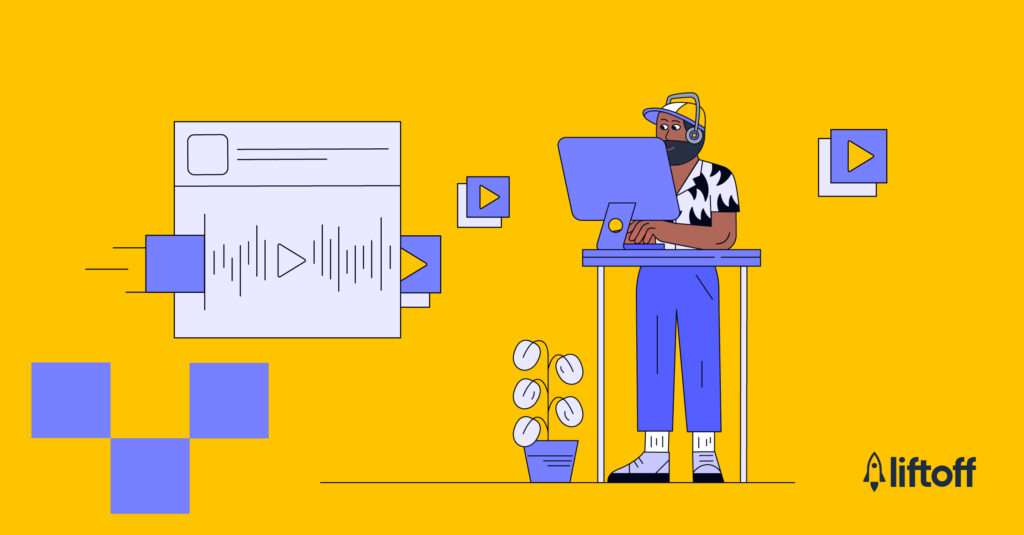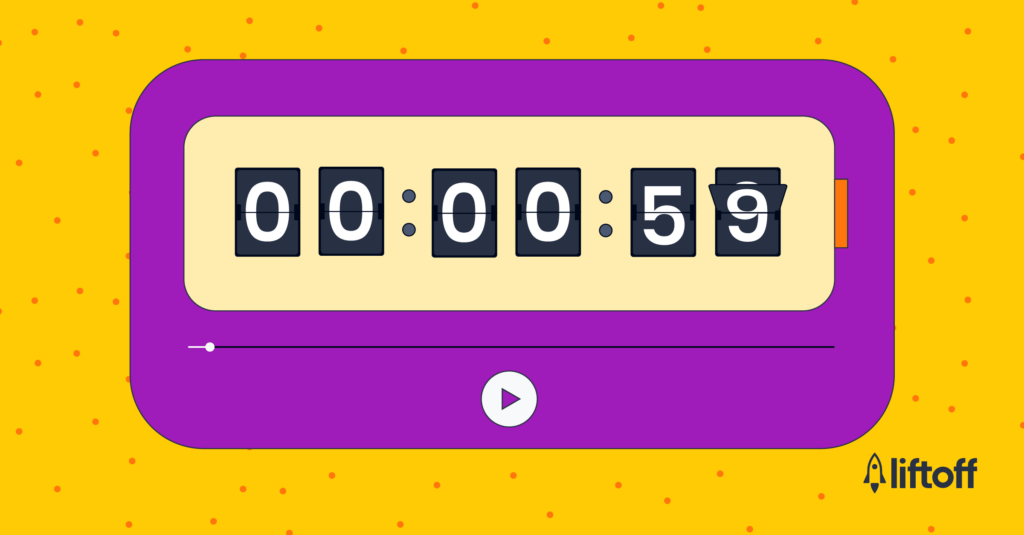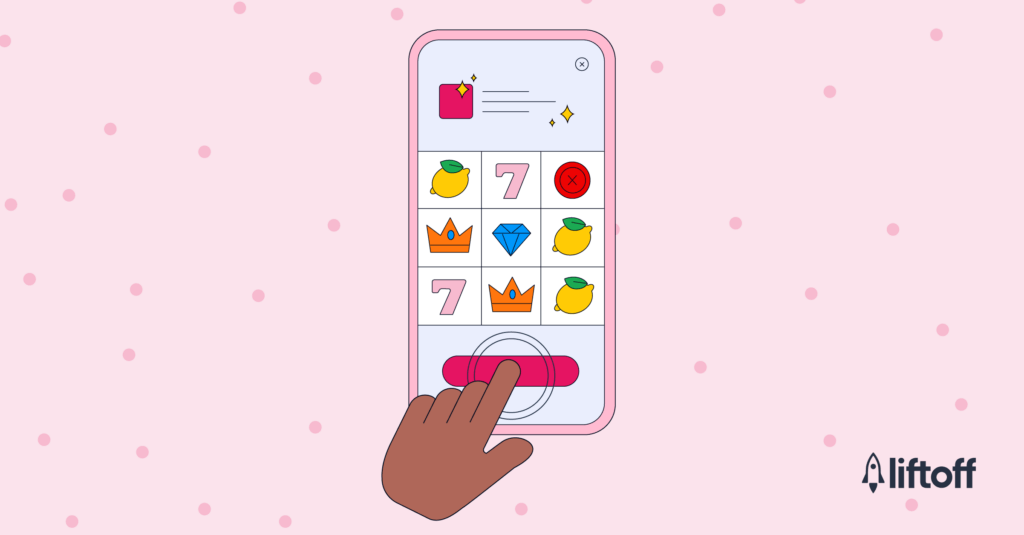
Webinar Recap: Talking Creative Formats That Win With Liftoff’s Deanna Ulrich
New trends emerge year after year, and the technology behind creative formats is constantly evolving. Finding the perfect creative strategy to capture users’ attention and generate installs isn’t easy. Simply put, there’s no universal formula for crafting the perfect ad, with success dependent on several factors – including the type of ad and how it fits with the audience, getting the most out of different formats, having timely and relevant elements, and making the most of emerging technologies such as AI.
Deanna Nguyen Ulrich, senior manager of creative performance at Liftoff, has extensive experience in these areas. She knows better than anyone that getting your creative right from the start has never been more necessary. With tighter budgets and cuts, the time and energy put into creative work are more valuable than ever.
Deanna recently participated in a webinar with a group of app marketers organized by Singular, focusing on identifying successful creative formats. You can watch the full recording here, but if you’re short on time, we’ve compiled a brief guide on creative formats highlighting some of the key insights shared during the webinar.
The type of ads you use can impact the success of campaigns
One of the first things Deanna Nguyen Ulrich highlighted during the webinar was that the types of ads used can impact a campaign’s success. Marketers need to stay on top of trends in ads to take advantage of what’s connecting with audiences. For example, Deanna mentioned that UGC and short-form videos have taken precedence over other formats like banner ads and interstitials in 2024. She also noted that longer videos and interactive ads, where users can engage with the content, are becoming both better in quality and more effective. Additionally, user-generated content, or UGC, is gaining traction.
However, Deanna also said that just because an ad performs well in one area doesn’t mean it will do just as well everywhere, as different apps will work better with specific ad formats. For example, she found that ads with longer videos with an interactive element perform best for gaming apps. In comparison, shorter videos usually get better results for non-gaming apps—especially those that are more practical, as they resonate more with users.
Regarding gaming apps, Liftoff has found through its exclusive ad formats that letting users have some control over their experience with ads can lead to better results. Two of Liftoff’s exclusive formats, ‘Triple Page’, which gives the user the option to skip the video and go directly to the playable before ending with a static end card with a clear call to action, and ‘Page Turner,’ which gives the user a different playable or video if they do not interact within 4 seconds, consistently improve conversion rates.
Many installs from Page Turners came from users who did not interact with the first playable but downloaded after seeing alternate content.
Incorporating holidays into your app marketing
Holidays such as Thanksgiving and Christmas provide ample opportunities to step outside your comfort zone and try new and creative ways to engage users. While Deanna did encourage incorporating some seasonal elements into your campaigns, she also stressed the importance of remaining authentic to your evergreen narrative and not going overboard with the festivities.
“Really make sure whatever you’re doing is true to your core brand storytelling,” said Deanna. “Maybe if it’s a gaming app, you have a little bit more room for some fun and some more silliness, and you can be more expressive with some of these holiday elements, but if you’re a more serious product, just some cooler colors and a wintry feeling to your themes can be effective.”
Despite this, Deanna encouraged advertisers to incorporate the holiday season into their marketing strategies, as it is a time-sensitive event that could encourage people to install. She suggested using interactive elements like countdowns to sale days, scratch-off vouchers, polls, or in-app events to acknowledge the season without going over the top.
Put the user first when thinking about ad creative
One element of the creative process that Deanna said advertisers need to remember is that even though ads can interrupt user experience, this doesn’t mean they can’t be engaging in their own right. At their core, ads are experiences that can delight and excite. By always aiming to design ads that keep users entertained while naturally weaving in messaging, advertisers will be seen more positively by users, who’ll also be generally more open to what’s being marketed.
One method to achieve this is to allow users to interact with the ad directly through playable or interactive elements. These provide input that can help entertain users and make them feel invested in the promoted app. Another way to engage users is through user-generated content, which has become one of the most successful and engaging creative formats. On average, Liftoff sees an uplift of 152% in conversion rates with UGC compared to other creatives.
Deanna said UGC typically performs well because it can resonate with users and create trust and emotional connections with an audience. However, that’s only true when UGC feels organic and genuine, particularly when in reference to social platforms such as TikTok, where users feel strongly about honesty and authenticity. To achieve that, Deanna suggested having real people use the app or showing a walkthrough of how they use it in their day-to-day lives with real benefits and use cases that can help users connect.
Three ways to use AI to assist with creative production
As technology develops, we’re always looking for new ways to create and improve creative production. AI is the latest development that improves the efficiency of the production process. Deanna said that Liftoff uses AI in three ways:
- Administration: By using AI to take on admin tasks, Liftoff’s creative teams can focus on innovative and engaging creative, as the overhead tasks have been removed.
- Efficiency: Liftoff uses AI to make production more efficient, specifically in time-consuming areas such as localization, translation, captions, and voiceovers.
- Exploring new concepts: AI can be beneficial for testing new concepts and art styles, such as animated brand mascots. This can either improve existing concepts or allow advertisers to test more out-of-the-box ideas with less commitment.
While AI may help create large volumes of content quickly or reduce overhead costs, a balance must be struck between these logistical benefits and ensuring that content still feels genuine and, at times, organic.
The importance of testing your creative
Lastly, Deanna said that testing is one of the most important steps in any creative strategy and is well worth investing time in. She also emphasized that quality is more important than quantity, and prompting advertisers to think carefully about the content they create is one of the best ways to see results.
She said, “We encourage the advertiser to be very intentional with the content they create and the resources they produce. This ensures that there’s a clear strategic path to follow. A creative strategy backed by scientific hypothesis can really go a long way toward convincing a customer to collaborate with you on creative testing.”
You can catch the full Creative Formats that Win Webinar from Singular for even more innovative mobile ad creative insights from Deanna.


